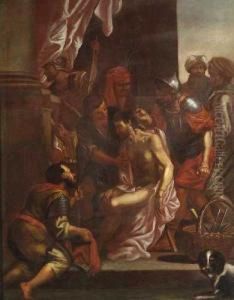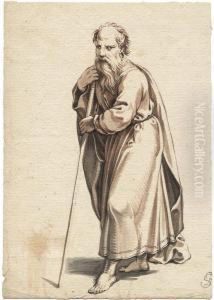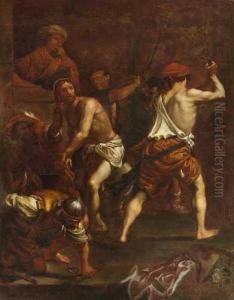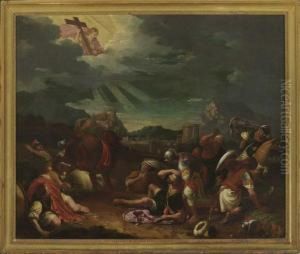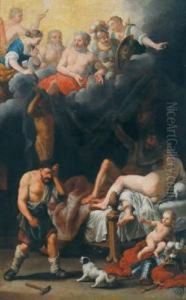Johann Friedrich Sichelbein Paintings
Johann Friedrich Sichelbein was a German painter known for his work during the Baroque period. Born in 1659, Sichelbein's artistic journey began in the region of Swabia, which was part of the Holy Roman Empire. There is little information about his early life and training, but it is known that he became an active artist in the late 17th and early 18th centuries.
Sichelbein's work was primarily centered around religious and historical themes, typical of the Baroque era. His style was characterized by dramatic contrasts of light and shadow, a technique known as chiaroscuro, which was prevalent among artists of that time. His compositions often included intense emotional expressions and dynamic movements, aiming to evoke a sense of awe and spiritual fervor in the viewer.
Throughout his career, Sichelbein received commissions from various churches and patrons, which allowed him to create altarpieces, frescoes, and other ecclesiastical works. However, unlike some of his contemporaries, Sichelbein did not gain widespread fame, and as a result, his works were largely confined to the region where he lived and worked.
Despite his relative obscurity, Sichelbein contributed to the cultural and artistic heritage of the Baroque period in Germany. His paintings can be found in local churches and collections, where they continue to be appreciated for their historical and artistic value. Johann Friedrich Sichelbein passed away in 1727, leaving behind a modest but meaningful body of work that reflected the artistic trends and religious sentiments of his time.
